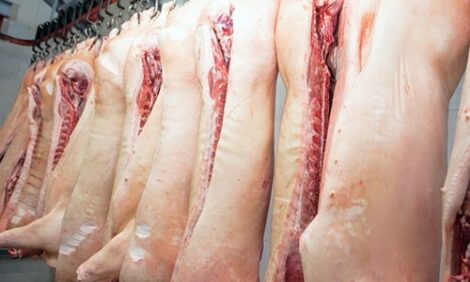



CME: Ethanol Industry Driving Corn Forward
US - CME's Daily Livestock Report for 12th November 2008.As the US corn harvest begins to wind down (71% completed vs. 92% a year ago), the
market will likely shift its focus on the grain demand picture and the chances are it will not
like what it sees (one can argue it has already begun to do just that). Corn shipments have decelerated
significantly recently and it remains to be seen if this simply reflects short term disruptions in
import-export credit financing or a more prolonged decline in US corn shipments to the rest of the
world.
The US is the top corn exporter in the world, accounting for about 65% of all corn traded in the
global market during marketing year 2007-08 (latest USDA projection). A booming market for commodities,
strong economic growth in developing economies, a weak US dollar as well as a short term
spike in wheat prices last year all combined to benefit the US corn industry in the last marketing year.
This was evidenced in the +300 million bushel increase in exports for the year and at 2.4 billion bushels
US corn exports were the largest on record. But that was then.
As the charts show, USDA
has been steadily revising down the amount of corn expected to be shipped in 2008-09. The latest estimate
pegged US corn exports at 1.9 billion bushels, some 200 million bushels less than the original forecast
back in May and over 400 million bushels less than the previous year. A weak US dollar clearly is
presenting a challenge for the corn industry but, longer term, the market will also have to consider the
impact of a sudden global economic slowdown, if not outright recession. In this respect, corn prices (a
good proxy for meat prices), have followed the path of energy and global freight rates.


Another big demand driver for corn going forward is the ethanol industry. USDA did
not cut ethanol use for 2008-09 in its latest estimate report despite eroding crude oil prices and tight
margins. It is difficult to know the real margins for the ethanol industry given how much they differ
from plant to plant but it is telling that some of the largest players have gone into bankruptcy, in the
process negatively impacting corn suppliers that had contracts on the books at prices much higher than
the current market.
It is also incredible that despite the reportedly very thin margins, there are
plans for new ethanol facilities, of all places in the US Southeast, with much of the needed feedstock
supply to be trucked or railed over from the Midwest. The renewable fuels mandate will likely put a
floor underneath ethanol demand but if industry margins continue to deteriorate, the 4 billion bushel
USDA forecast could buckle. The latest estimates of ethanol margins are in the figure below.









